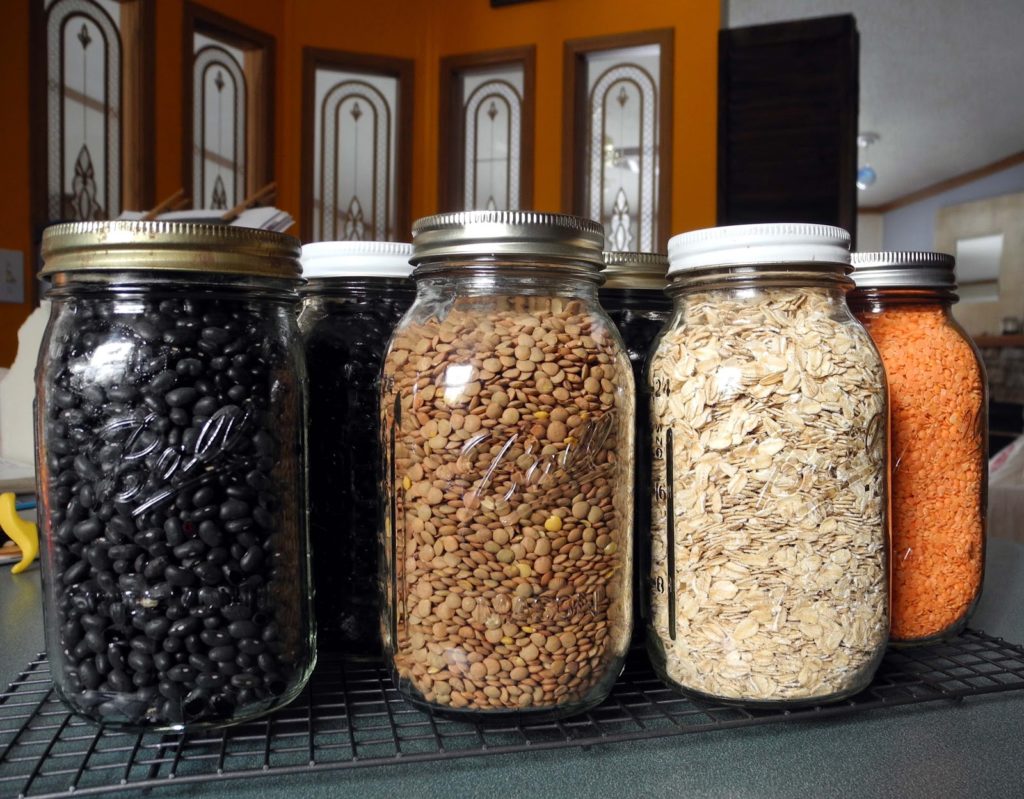 By Sara Tipton
By Sara Tipton
Dry canning is the storage of dry foods such as rice or beans in canning jars. This process is popular for long-term food storage in your prepper pantry.
If you are new to canning, dry canning is a great way to start not only a prepper pantry but a canning habit.
A great way to start is by using oxygen absorbers in dry canning (jars). Oxygen absorbers are made of a chemical compound, the active ingredient of which is a powdered iron oxide. While they are not edible, they are not toxic. No harmful gases are created and the oxygen does not remove the fresh smell and taste of your food.
Dry goods paired in a jar with oxygen absorbers make for an easy way to get started canning. The oxygen absorber has two purposes. It will remove oxygen so little critters don’t live in your food reserve, and it will help your food stay fresh.
Dry canning in jars does not require heat to seal the lid. The job of sealing the lid takes place with the help of the appropriate oxygen absorbers. To get started, you’ll need oxygen absorbers, canning jars with rings and lids, and food to dry can. We started dry canning with beans because we like them, they are fairly inexpensive and easy to come by at any store. Start with clean canning jars by boiling them and allowing them to dry thoroughly. Add your dry food and add the appropriate oxygen absorber inside the can and seal. The absorber does the job of sealing the can properly. You’ll hear a pop when the absorber has sealed the lid.
Some prepper websites may advise you to use hand warmers instead of oxygen absorbers, but we DO NOT recommend this. Don’t use hand warmers with food as they are not a food-safe material. Use oxygen absorbers for your food and hand warmers for your hands.
You can also use this method of oxygen absorbers with food-safe buckets and Mylar. For larger quantities of dried goods, choose food-grade buckets and Mylar bags. You can simply store more in large buckets and bags than you can in the largest canning jars. Food grade buckets are made of a special plastic that’s free from toxins that would otherwise absorb into your food. In this method, you’ll place your food into the Mylar bags along with an appropriate oxygen absorber, then seal the Mylar bags. Put the bags in the food-grade buckets after sanitizing them. Seal the buckets and store them for the long term.
We all know canning jars have been tough to come by, and food-grade buckets aren’t always readily available at local small grocery stores.
In this case, you can dehydrate, or consider vacuum sealing food. Get a Food Saver and try dry canning with a vacuum sealer. You won’t need oxygen absorbers for this method. This is a useful tool to store meat too. We often put elk meat with seasoning already on it and seal it with a Food Saver. It’s ready to use either by sous vide method or just roasting in an oven or placing on a grill.
Any number of foods can be dry canned, such as beans, seeds, oats, and cereals. You can also store couscous, baking soda, white rice (brown rice has too much oil to dry can), and wheat in this manner. Take into account what foods your family likes to eat before you start dry canning. Don’t store things people in your family are allergic to or won’t eat.
Dry canning is an easy way to begin storing foods and getting prepared. Once you’ve mastered dry canning, try dehydrating food and water bath or pressure canning. This is great practice for an emergency or SHTF situation.












